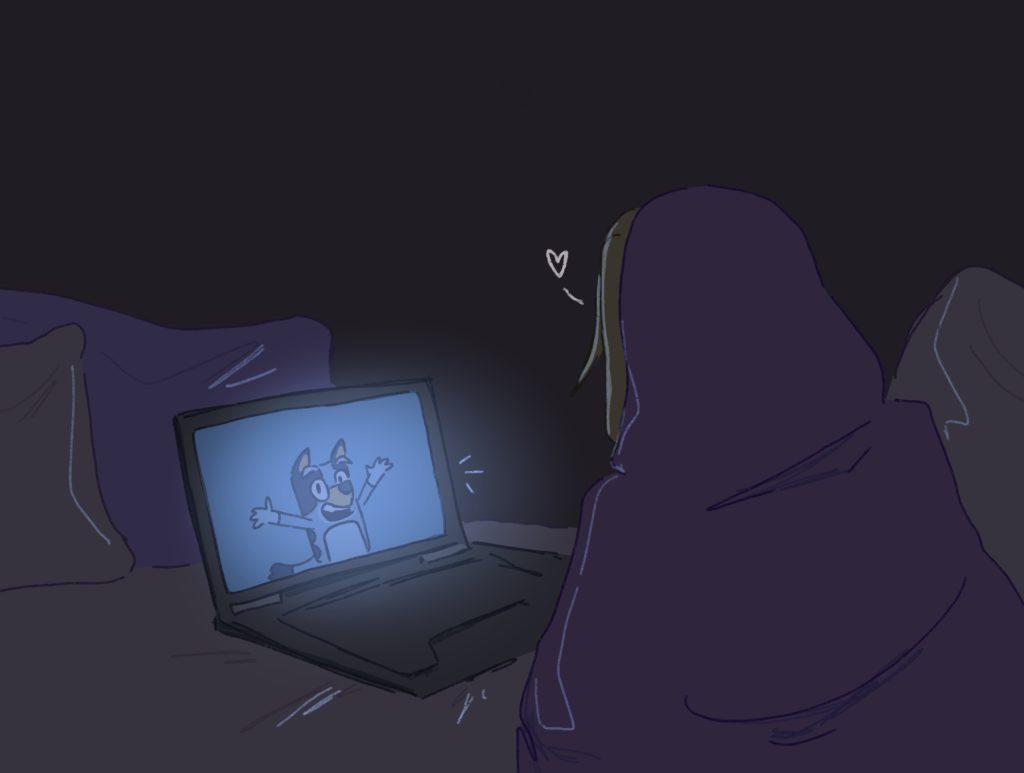
Transparency Item: The Perspectives section of the Graphic is comprised of articles based on opinion. This is the opinion and perspective of the writer.
When entering the world of adulthood, there’s an unspoken shift in tone.
Life begins to feel more serious as people navigate through pursuing higher education, getting a career, starting a family, etc. There isn’t as much time to take a trip down memory lane or delve into activities that are seen as “childish.”
A couple of weeks ago, I rewatched “Total Drama World Tour,” one of my all-time favorite cartoon shows. Part of me felt guilty for wasting my time on a kids’ cartoon instead of spending it doing something possibly useful for my future.
However, the other half of me was in pure bliss. It was a great way to take a temporary break from the exhaustion of keeping up with projects and deadlines.
There shouldn’t be any shame in taking a bit of time to indulge in a feel-good cartoon. In fact, there’s a whole world of psychological benefits connected to it.
Watching Kids’ Cartoons Releases Endorphins
Endorphins are “feel-good” chemicals the body produces. They’re released from the brain and sent throughout the nervous system to help relieve pain and reduce stress.
After releasing endorphins, the brain also releases dopamine, another “feel-good” chemical.
Cartoons are a fun form of television, full of interesting characters and silly storytelling. One can’t help but get lost in the wackiness and burst out laughing at a funny moment in the show.
Along with the short-term benefits of instant amusement, there are also long-term ones.
“As far as watching cartoons go, it’s been previously proven that laughing and dopamine lower blood pressure and release endorphins,” said Jack Cahalane, chief of mood and anxiety services at the University of Pittsburgh Medical Center, in a 2017 interview with HuffPost News.
Higher levels of endorphins in a person also lead to less anxiety and stress-related problems in the future, according to Mental Health America.
Kids’ Cartoons Can Act as a Coping Mechanism
During periods of anxiety or depression, watching a light-hearted kids’ cartoon is a great way to cope with the negative feelings, according to Medium.
These cartoons include themes of teamwork and friendship and show how good always overcomes evil. These themes restore optimism and reduce levels of sadness in the viewer, according to Vice.
The positive environment of the show can also act as a form of escapism for the viewer, transporting them into its simple world. Focusing on the show, the viewer can step away from the reality of their emotions, according to Scout.
Watching kids’ cartoons can help viewers escape not only into the cheerfulness of the show but also to the simple pasts of their childhoods, according to The State Press.
Children’s Cartoons Are a Source of Nostalgia
Nostalgia is “a sentimental longing or wistful attraction to the past, typically for a period or place with happy personal associations,” according to Google.
The Fountain of youth: The impact of nostalgia on youthfulness and implications for health study found, when experiencing nostalgia, the mind mentally transports to an earlier era of one’s life, allowing a person to re-experience the positivity, youthfulness and simplicity of the past.
Tapping into nostalgia also helps increase levels of self-esteem in people, according to Psychology Today. When the mind relives the memories and positive emotions from the past, the person re-experiences the joy they once felt, empowering them.
The experience of watching cartoons — and the cartoons themselves — are stored in the mind as happy memories, which are then taken into adulthood with positive associations, according to AlignThoughts.
Watching the cartoon, one recalls the memories associated with it, allowing the viewer to re-experience those positive emotions and uplifts their mood.
Turning to kids’ cartoons as a source of stress relief should be normalized. People can improve their health and mental well-being while watching a fun, light-hearted show for leisure.
___________________
Follow the Graphic on X: @PeppGraphic
Contact Adri Sahakian via email: adri.sahakian@pepperdine.edu or by Instagram: @mouseratstan
